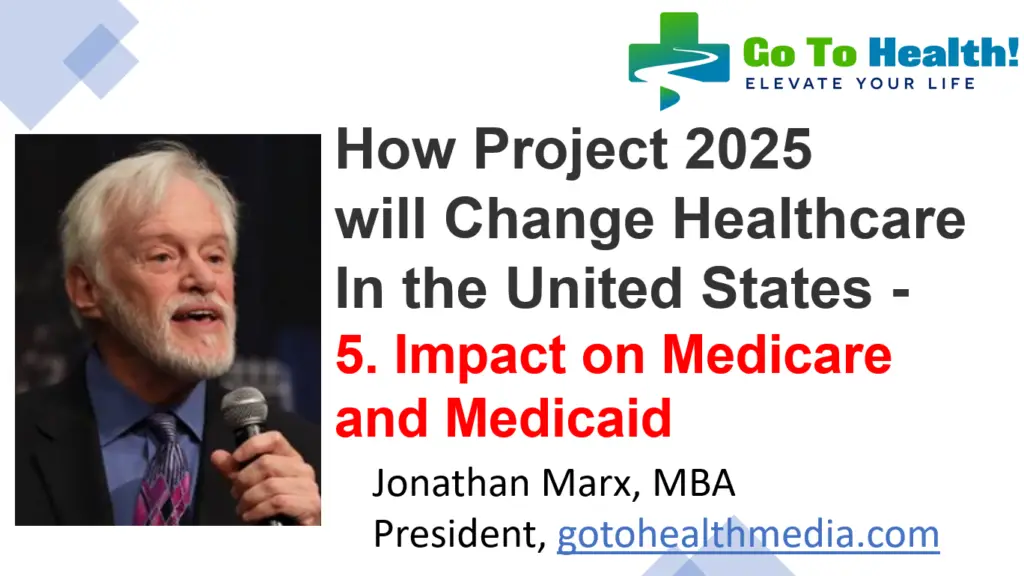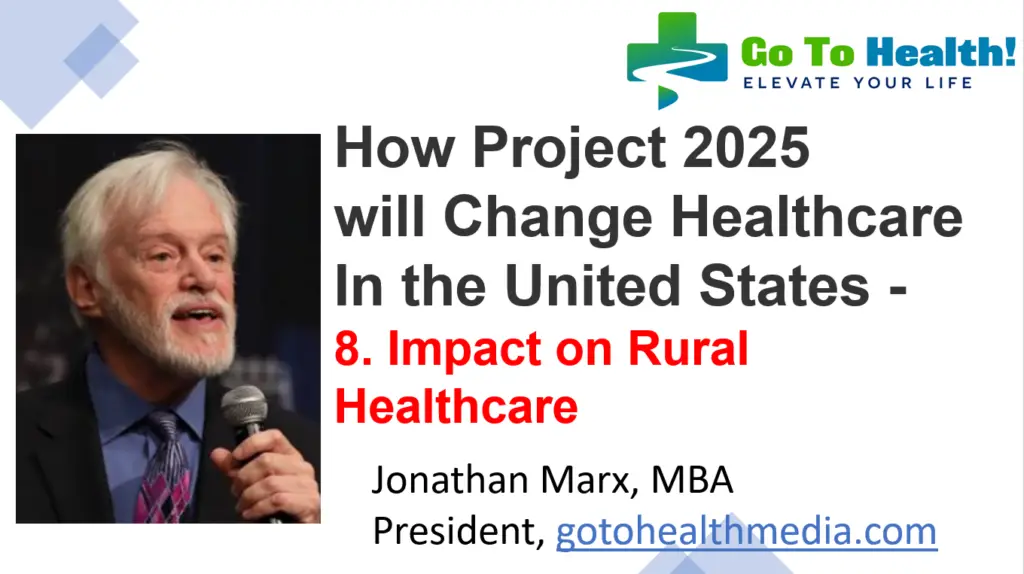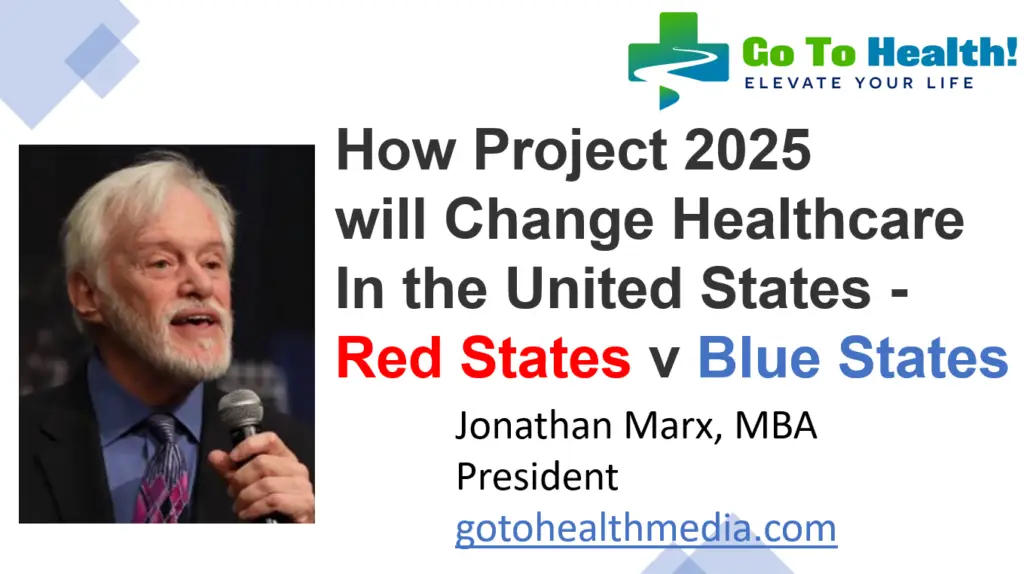In the complex landscape of American healthcare, Medicaid stands as a critical lifeline for millions of individuals and families. However, looming changes in federal policy threaten to upend this vital support system. The proposed Medicaid cuts by the 2025 Congress pose significant challenges, potentially impacting nearly 80 million people, including a staggering 43% who are children. As states grapple with the financial strain of covering these shortfalls, the repercussions on healthcare accessibility and quality could be profound.
A Georgetown University Report found that non-elderly adults and children in rural areas and small towns are more likely than those living in metro areas to rely on Medicaid for their health insurance. As a consequence, reductions in federal Medicaid funding being contemplated in Congress are more likely to cause greater harm to these communities than metro areas.
This Report corroborates a Video Series we did late in 2024 on how Project 2025 will change healthcare in the United States. And one of those videos was on how Project 2025 would negatively effect healthcare in rural areas.
With us to talk about this more with today is Joan Alker, the Executive Director and Co-Founder of the Center for Children and Families (CCF), and a Research Professor at the Georgetown University McCourt School of Public Policy. She is a nationally recognized expert on Medicaid and the Children’s Health Insurance Program (CHIP) and is the lead author of CCF’s annual report on children’s health care coverage trends.
Understanding Medicaid and Its Importance
Medicaid is a joint federal and state program established to provide healthcare coverage to low-income individuals and families. It serves a diverse population, including children, pregnant women, elderly individuals, and those with disabilities. By offering essential medical services, Medicaid ensures that millions of Americans receive necessary care, from routine check-ups to emergency treatments.
The Scope of Medicaid Coverage
Medicaid’s comprehensive coverage includes:
- Hospital Services: Inpatient and outpatient services, emergency care.
- Primary and Specialty Care: Access to a network of healthcare providers.
- Preventive Services: Vaccinations, screenings, and wellness visits.
- Long-Term Care: Support for individuals requiring extended medical assistance.
- Prescription Drugs: Coverage for necessary medications.
Without Medicaid, many beneficiaries would face significant financial barriers to accessing these essential services, leading to poorer health outcomes and increased disparities in healthcare access.
The Proposed Cuts: What’s Changing?
In the upcoming 2025 Congressional session, proposed changes to Medicaid could result in substantial reductions to the program’s funding and scope. These cuts are driven by broader efforts to reduce federal spending and healthcare costs but carry severe implications for those reliant on Medicaid for their healthcare needs.
Key Areas Affected by the Cuts
- Eligibility Criteria: Stricter eligibility requirements may exclude current beneficiaries, particularly vulnerable populations.
- Coverage Limits: Reduction in covered services could lead to fewer available treatments and support options.
- Reimbursement Rates: Lower payment rates to healthcare providers might result in reduced access to care as providers withdraw from Medicaid networks.
- Administrative Adjustments: Increased bureaucracy and complexity in program management could impede efficient service delivery.
Impact on 80 Million Lives
The ripple effects of these Medicaid cuts extend far beyond immediate budgetary concerns. Nearly 80 million Americans could find their healthcare coverage jeopardized, with children bearing a disproportionate share of the burden.
Children at Risk
Children represent 43% of those affected by the proposed Medicaid reductions. This demographic is particularly vulnerable, as access to timely and consistent healthcare is crucial for healthy development and long-term well-being. Potential impacts include:
- Delayed Medical Treatments: Necessary procedures and treatments may be postponed or inaccessible.
- Preventive Care Shortfalls: Essential vaccinations and regular check-ups might be missed, increasing the risk of preventable diseases.
- Mental Health Services: Reduced access to mental health support could affect children’s emotional and psychological well-being.
Broader Population Effects
Adults, the elderly, and individuals with disabilities will also face significant challenges, including:
- Financial Strain: Increased out-of-pocket costs for medical services can lead to financial instability and hardship.
- Healthcare Access Barriers: Fewer available providers and longer wait times may deter individuals from seeking necessary care.
- Health Disparities: Existing inequalities in healthcare access and outcomes could worsen, particularly among marginalized communities.
State-Level Challenges: Unable to Cover Costs
States are grappling with the dual pressures of maintaining Medicaid services while contending with reduced federal funding. This financial strain threatens the sustainability of Medicaid programs at the state level, leading to difficult decisions and potential service cuts.
Struggles Faced by States
- Budget Constraints: Limited state budgets make it challenging to compensate for reduced federal Medicaid funds without significant cuts to other services.
- Provider Withdrawal: Lower reimbursement rates may incentivize healthcare providers to exit Medicaid programs, reducing the network of available care.
- Service Reductions: States may need to limit the scope of covered services, impacting the quality and comprehensiveness of care.
- Administrative Burdens: Increased bureaucracy and complexity in managing Medicaid programs can divert resources from direct patient care.
Consequences of Inadequate Funding
- Decreased Healthcare Quality: Reduced funding often translates to lower quality of care, as states struggle to maintain service standards.
- Increased Uncompensated Care: Hospitals and clinics may face higher levels of uncompensated care, straining local healthcare infrastructures.
- Economic Impact: Poor health outcomes can lead to decreased workforce productivity and increased economic inequality.
Real-Life Implications: Stories from the Ground
Behind the statistics and policy discussions are the real lives of individuals and families who depend on Medicaid for their health and well-being. Consider the story of Maria, a single mother of two children, who relies on Medicaid for her son’s asthma treatment. With the proposed cuts, Maria faces the terrifying prospect of not being able to afford her son’s necessary medications and frequent doctor’s visits, putting his health at serious risk.
Similarly, John, a senior citizen with multiple chronic conditions, depends on Medicaid to manage his healthcare needs. Reduced coverage could force him to choose between essential treatments and basic necessities, exacerbating his health conditions and diminishing his quality of life.
These personal narratives highlight the human cost of policy decisions and underscore the urgent need to address Medicaid funding to protect those who are most vulnerable.
Potential Solutions and Advocacy Efforts
Amid the challenges posed by the proposed Medicaid cuts, various strategies and advocacy efforts are emerging to mitigate the impact and preserve the integrity of the program.
Policy Advocacy
- Lobbying for Increased Funding: Advocates are pushing for higher federal and state funding allocations to sustain Medicaid services.
- Protecting Essential Services: Efforts focus on ensuring that critical healthcare services remain covered despite budget cuts.
- Expanding Eligibility: Proposals to broaden Medicaid eligibility aim to encompass more individuals in need of support.
Community Support Initiatives
- Non-Profit Assistance: Organizations are stepping in to provide additional resources and support for those affected by Medicaid reductions.
- Healthcare Navigation Services: Programs that help individuals understand and access available healthcare options can alleviate some burdens caused by cuts.
Public Awareness Campaigns
Raising awareness about the potential impacts of Medicaid cuts is crucial in garnering public support and driving policy change. Campaigns aimed at educating the public on the importance of Medicaid and the consequences of budget reductions can mobilize communities to take action.
How You Can Make a Difference
The proposed Medicaid cuts present a critical juncture for healthcare in the United States. Individual actions, combined with collective advocacy efforts, can influence the outcome and help protect this essential program.
Get Involved
- Contact Your Representatives: Reach out to your local and federal lawmakers to express your concerns about Medicaid cuts and advocate for increased funding and support.
- Join Advocacy Groups: Become a member of organizations dedicated to protecting Medicaid and ensuring equitable access to healthcare.
- Participate in Public Forums: Engage in community discussions and forums to raise awareness and build a unified voice against proposed reductions.
Stay Informed
- Follow Policy Developments: Keep abreast of the latest legislative changes and proposed adjustments to Medicaid funding and regulations.
- Educate Your Community: Share information with friends, family, and your community to foster a broader understanding of the issues at stake.
- Support Affected Individuals: Offer assistance to those directly impacted by Medicaid cuts, whether through volunteer work, donations, or advocacy.
The Road Ahead: Navigating Uncertainty
As the 2025 Congressional session approaches, the future of Medicaid remains uncertain. The decisions made in legislative halls will have lasting effects on millions of Americans’ health and well-being. While the challenges are significant, the resilience and solidarity of communities can drive meaningful change.
Potential Scenarios
- Successful Preservation and Expansion: Advocacy efforts lead to the protection and even expansion of Medicaid, ensuring continued access to essential healthcare services.
- Partial Cuts with Safeguards: Moderate reductions are implemented, accompanied by measures to mitigate the impact on the most vulnerable populations.
- Significant Reductions: Major cuts are enacted, leading to widespread loss of coverage and increased healthcare disparities.
Preparing for All Outcomes
Regardless of the outcome, it is crucial for individuals, communities, and policymakers to prepare for the potential shifts in healthcare access and delivery. Strengthening healthcare infrastructures, investing in preventive care, and fostering collaborative efforts can help navigate the uncertainties ahead.
Conclusion: The Stakes Are High
The proposed Medicaid cuts by the 2025 Congress represent more than just budgetary adjustments; they signify the future of healthcare accessibility for millions of Americans. From children who rely on Medicaid for their developmental needs to elderly individuals managing chronic conditions, the stakes are exceptionally high.
Protecting Medicaid requires a concerted effort from all sectors of society. By understanding the implications, advocating for necessary changes, and supporting affected communities, we can work towards a healthcare system that serves everyone, regardless of economic status.
Take Action Today
Don’t wait for the impact to unfold. Stand up for Medicaid and ensure that quality healthcare remains accessible to all who need it. Get involved in safeguarding Medicaid services and supporting your community’s health needs.
Understanding the intricacies of Medicaid and the potential consequences of funding cuts is essential for anyone concerned about the state of healthcare in the United States. Stay informed, stay engaged, and be a part of the solution to protect the healthcare system that supports so many.
Listen on Podcast
Related Videos
Did you like your experience?
Please leave us a Testimonial HERE if you have a Google account.
Your word helps get our word out to more people.
Thank you in advance!!





